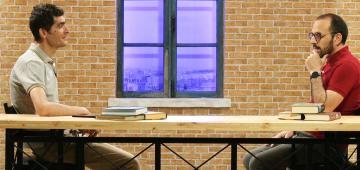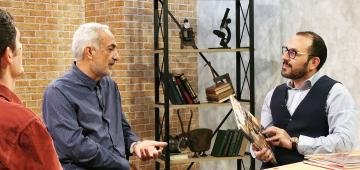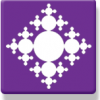 |
Armenian books that will not interfere with the vacation
What to read on summer holidays or vacations? Usually this question comes up during the school holidays, but adults also need referral lists. What to read in vacation homes, mountains, beaches and elsewhere? Literary experts Hayk Hambardzumyan and Arkmenik Nikoghosyan discuss the books that do not interfere with vacation in the "Parallel Readings" program.
|
 |
Aksel Bakunts
The 125th anniversary of the birth of the great Armenian novelist Aksel Bakunts was completed. Living and creating in difficult and tragic times, Bakunts has shown examples of patriotism and dedication in all the thunders of his activities, contributed to the development of Armenian literature, book publishing and agriculture. What was Bakunts like as a writer, farmer, translator and Armenian man? Literary experts Hayk Hambardzumyan and Arkmenik Nikoghosyan discuss these questions in the "Parallel Readings" program.
|
 |
Little heroes of adult literature, part 2
In classical and modern works of Armenian literature, minor heroes are traditionally little different from adults. They are burdened with domestic, social, and sometimes even political concerns and ideas. How and when does their childishness appear and does it exist? Literary experts Hayk Hambardzumyan and Arkmenik Nikoghosyan discussed these issues in the "Parallel Readings" program.
|
 |
Little heroes of adult literature, part 1
Armenian and international children's literature has no shortage of beloved and stellar child heroes. But there are also many books intended for adults, where the main actors are children again. Why do the authors choose child heroes, how is it possible to present big and important ideas with their eyes, speech and behavior? Literary experts Hayk Hambardzumyan and Arkmenik Nikoghosyan discuss these questions in the "Parallel Readings" program.
|
 |
Zahrat-100
This year marks the 100th anniversary of the birth of Polish-Armenian poet Zahrat. In the conditions of censorship in Turkey, how was the poet Zahrat established, what are the characteristics of Polish-Armenian poetry and what are the artistic peculiarities of Zahrat's poetry? Literary experts Hayk Hambardzumyan and Arkmenik Nikoghosyan discuss these questions in the "Parallel Readings" program.
|
 |
Why and how to portray "David of Sassoon"
We imagine the epic "Sasna Tsrer" with the illustrations of Hakob Kojoyan, Yervand Kochar, Aram Isabekyan and many other artists. Images that have become symbols of epic characters and, of course, the original text often do not allow us to imagine the heroes in a new way, and even more so, to perceive our national epic in new formats, for example, painting or comics. Why and how to portray "David of Sassoon"? Literary critics Hayk Hambardzumyan, Arkmenik Nikoghosyan and artist Tigran Mangasaryan discuss these questions in the "Parallel Readings" program.
|
 |
A poem about me. Vardan Hakobyan
Vardan Hakobyan, entering the arena in the early 70s, continued the traditional path of Armenian poetry. From the end of the 1990s, his work changed, acquiring modernist shades. What are the characteristics of the poetry of the popular poet from Artsakh, about which Vardan Hakobyan wrote and remained silent? Literary experts Hayk Hambardzumyan and Arkmenik Nikoghosyan discuss these questions in the "Parallel Readings" program.
|
 |
What does the parable teach in the 21st century?
A parable is a didactic, often allegorical, short, profound conversation or verse that presents ideas that are relevant for all times. Do proverbs keep their meaning even in the 21st century? Literary experts Hayk Hambardzumyan and Arkmenik Nikoghosyan discuss the issue in the "Parallel Readings" program.
|
 |
What is "The Little Prince" Really About?
Antoine de Saint-Exupéry's "The Little Prince" is interpreted in various readings as a children's tale about the relationship between adults and children, an allegory of a love story, an anti-fascist ideology, even an existential fable about loneliness. What is "The Little Prince" really about? Literary experts Hayk Hambardzumyan and Arkmenik Nikoghosyan discussed the layers of "Little Prince" in the "Parallel Readings" program.
|
 |
Hovhannes Shiraz, 110th anniversary, Part 2
The influence of Hovhannes Shiraz's poetry was very great in Armenia and the Diaspora. His poems dedicated to the Armenian Genocide and Western Armenia are still the focus of readers' attention. How was the poet able to address these topics that were forbidden in the Soviet period and how relevant are these works today? These questions are discussed by literary critics Hayk Hambardzumyan, Arkmenik Nikoghosyan and Samvel Muradyan in the "Parallel Readings" program.
|
 |
Hovhannes Shiraz, 110th anniversary, part 1
This year marks the 110th anniversary of the birth of Hovhannes Shiraz. What was Shiraz's entry into literature, how was he able to create works of the traditions of Armenian pastoral poetry in the times of "factory" and propaganda poetry, and what was the attitude of the literary environment towards Shiraz, especially Yeghishe Charents? These questions are discussed by literary experts Hayk Hambardzumyan, Arkmenik Nikoghosyan and Samvel Muradyan.
|
 |
From a poem to a song and vice versa
Music and poetry have been closely related at all stages of the development of art. Many poets have also been musicians and many songwriters poets. We also have such examples in our time. How does the poetry match the music, are the lyrics a poem? Literary experts Hayk Hambardzumyan, Arkmenik Nikoghosyan and songwriter, poet Narek Kosmos discuss these questions in the "Parallel Readings" program.
|
